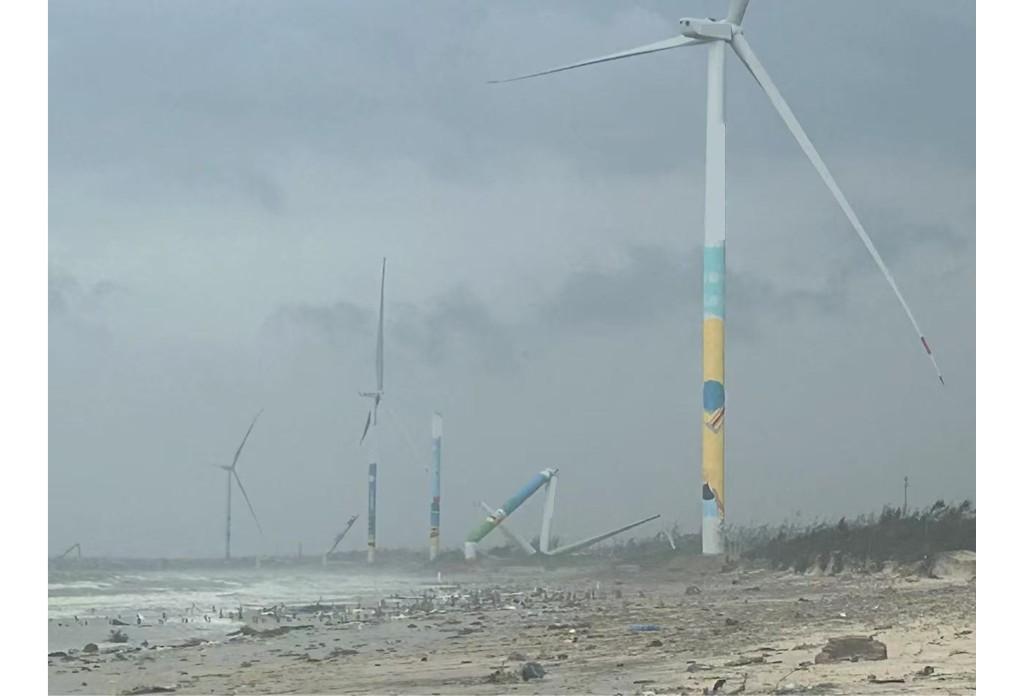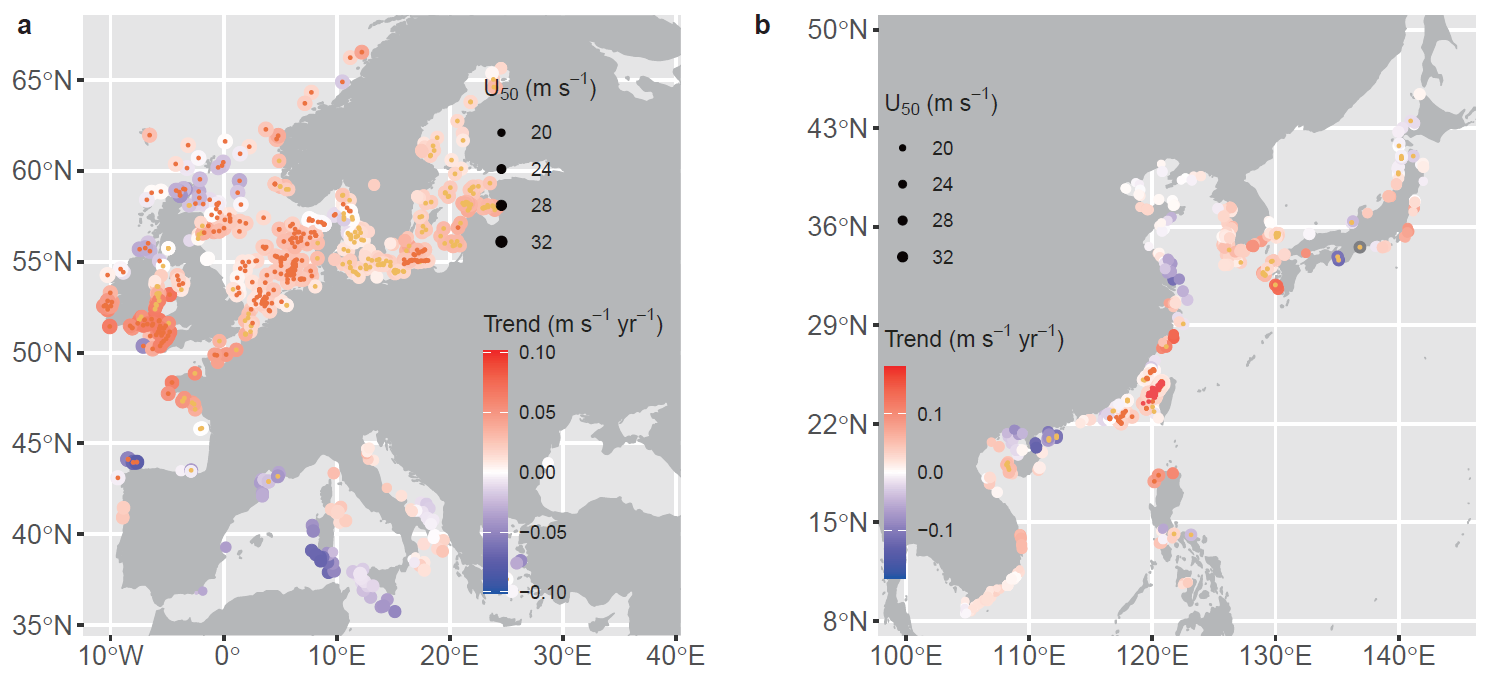Extreme wind events over the world’s oceans are intensifying under climate change, posing growing risks to the durability and safety of offshore wind power installations. For instance, the land fall of Typhoon Yagi (2024) caused the collapse of six wind turbine in Hainan, China (Figure 1). As offshore wind energy expands rapidly to meet global decarbonization goals, understanding how changing wind extremes may impact turbine design and operational safety has become increasingly critical.

A new study led by Professor Zhenzhong Zeng’s research team from the School of Environmental Science and Engineering at the Southern University of Science and Technology (SUSTech) has revealed that the 50-year return period wind speed—a critical factor in turbine structural design—has risen significantly across oceans, with implications for both operational and planned wind farms.
The research, published in Nature Communications under the title “Increasing extreme winds challenge offshore wind energy resilience,” analyzed hourly wind data at 100 meters height above ground from the ERA5 reanalysis dataset spanning 1940 to 2023. The team calculated the 50-year return period wind speed (U₅₀) by applying a Gumbel distribution to annual maxima. In order to derive the trend change of U₅₀, they applied a moving time-window approach, recalculating U₅₀ on a year-by-year basis.

Figure 1. Collapsed wind turbine caused by Super Typhoon Yagi
Key findings show a global oceanic U₅₀ increase of 0.016 m s⁻¹ per year (p < 0.01), with positive trends in 62.85% of coastal grid cells. Regionally, U₅₀ values exceed 37.5 m s⁻¹—the design limit for the most common Class III turbines—in 36.7% of ocean areas, concentrated along tropical cyclone paths and high-latitude storm tracks such as the North Atlantic, Northeastern Pacific, and Southern Westerlies (Figure 2).

Figure 2. Spatial distribution and trend of the fifty-year return period wind speed
Critically, over 40% of commissioned and planned offshore wind farms in Asia and Europe have already recorded wind speeds surpassing this Class III threshold (Figure 3). More than half of these sites are located in zones exhibiting upward U₅₀ trends, linked to shifts in tropical and extratropical cyclone behavior driven by warming sea surface temperatures, enhanced latent heat release, and altered atmospheric circulation.

Figure 3. The fifty-year return period wind speed and its trend in offshore development zones
These trends underscore the pressing need to integrate climate change projections into the evaluation of turbine specifications and site selections, thereby mitigating potential economic losses and risks to energy supply stability arising from intensifying extreme winds.
Joint Ph.D. student Yanan Zhao of The Hong Kong Polytechnic University (PolyU) and Eastern Institute of Technology, Ningbo (EIT), and formerly an undergraduate of the School of Environmental Science and Engineering at SUSTech, is the first author of the paper. The corresponding authors include Professor Zhenzhong Zeng, Yiheng Tao from the World Bank Group, Yuntian Chen from EIT, and Jinyue Yan from PolyU.
Paper link: https://www.nature.com/articles/s41467-025-65105-3
To read all stories about SUSTech science, subscribe to the monthly SUSTech Newsletter.
Proofread ByAdrian Cremin, Yuwen ZENG
Photo BySchool of Environmental Science and Engineering